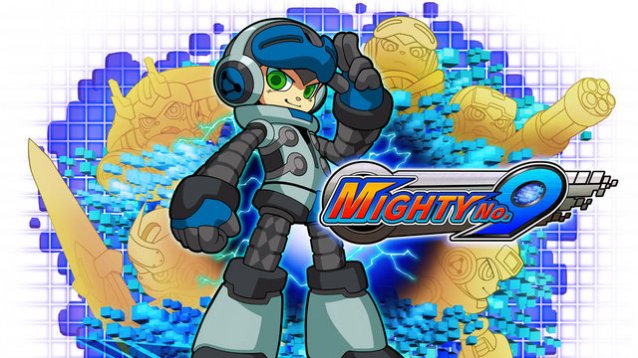

What defines DLC today? Is it the steady intravenous drip of “premium” packages endlessly circulating content through a game’s established universe – replenishing singleplayer with missions and sidequests and characters; multiplayer with maps and modes and weapons at every stagnating pulse of excitement? Or is it something larger: the concentrated effort of a developer’s vision and resources, built through months of post-release toiling?
It’s a question with diverse answers befitting of a diverse industry. For the prodigious Elder Scrolls V: Skyrim, Bethesda’s response is Dawnguard, the first iteration of a slow-churned, “substantial” DLC agenda. But while the long-time-coming does indeed produce significant — and satisfying — additions to Skyrim’s gameplay and lore, Dawnguard isn’t immune from an underwhelming sense of untapped potential.
Keeping with the theme of Skyrim’s presentation, the “Dawnguard” questline occurs organically – no flashy cutscenes or tedious save shuffling required – through the game’s living universe. After downloading (and after the player surpasses level 10 – a mere hour’s task for newcomers), rumors begin percolating around Skyrim’s cities – along with a few bodies produced by actual nighttime vampire incursions – that a war is brewing between vampires, the cannibalistic occult, and the Dawnguard, a secretive group of titular vampire hunters. It’s not long before the dynamic is made clear: the vampire lord Harkon is plotting a resurgence of his species by using an ancient Elder Scroll to control the sun. Like the civil war between the Stormcloaks and Imperials, the player determines their allegiance and, eventually, the victor, but the new exigency lends an epic vigor to Skyrim’s storyline that wasn’t found before outside the main quest, while also expanding artfully on the game’s previously-established fiction.
Vampirism has been a crutch on gameplay as much as a curse on its characters in The Elder Scrolls V: Skyrim. Dawnguard is Bethesda’s attempt to revive the once-staid character choice — and the vampire quest branch feels far more inspired than its mortal analogue. While the main storyline recycles very similar paths for whichever side is chosen, side quests here venture upon more intriguing concepts and are tinged with the political intrigue surrounding the decreed hierarchy of Castle Volkihar, your new home. More importantly, joining forces with the ultraviolet-sensitive, Lord Harkon grants players the transformational power of the Vampire Lord — the vile apex of the species.
The Vampire Lord power introduces combat abilities far more lethal than anything imbued to the race before, with the lord capable of feasting upon foes during melee, casting potent spells in a hovering state, skirting across the ground in wing-fluttering sprint, and upgrading his nefarious talents through a brand new skill tree. The combat can offer a blissful reprieve from the fighting conventions of Skyrim Standard; unfortunately, it’s hindered by hastily designed controls: Environments are nearly unresponsive save for unlocked doors; peaceful human interaction is off-limits; and first-person view is curiously blocked out, exacerbating the navigational difficulties presented by the creature’s enlarged physique. Transforming in and out of the form at-will preserves the gameplay’s overall integrity and enjoyment (townspeople no longer attack the human visage of a vampire, making the choice highly compatible with your Dragonborn identity), but isn’t free from a vulnerable, often laggy two- or three-second delay.
Siding with the Dawnguard settles players into Fort Dawnguard — a picturesque, titanic mountainside castle near Riften that’s incrementally renovated into a lavish, yet battle-ready fortress as the quests advance. It’s a progression premise that’s ostensibly reflective of the group’s advancement — the amassing of a resistance — as our vampire-hunting leader, Isran, labors to find a solution for the undead scourge. The side quest structure never really deviates from this pattern of resource gathering, recruiting, and teambuilding, however, and the Dawnguard pathway’s accompanying perks — armored trolls, enhanced crossbow technology, and a werewolf skill tree for those who choose the game’s other transformative ability — don’t amount to the appeal of having a go-go-gadget Vampire Lord power.
As mentioned, Dawnguard’s settings and overarching narrative are nearly identical between the vampire/vampire hunter pathways — mostly minor story and dialogue tweaks are made to accommodate intersecting character subplots — and some fans will be dismayed by the lack of a true double-edged campaign. But the content Bethesda has implemented doesn’t always disappoint.
Level design begins with well-charted Skyrim staples — caves, crypts, dungeons, caves — but then journeys into sprawling, spellbinding destinations as the plot thickens. Our new companion, Serana (the detached daughter of Lord Harkon), is a beautiful, articulate, and deeply intriguing character with a keener AI sense to boot. Moreover, quests provide opportunities for new gear and weapons, such as Dragonbone items and the sun-powered Auriel’s Bow, and are replete with loot made copiously available by new enemies like Gargoyles and Legendary Dragons. Many of the new items can be reproduced at forges, generating fresh approaches to smithing skill mastery and material hoarding.
Attempting to address more qualms about the base game — our Skyrim review was glowing, but not without gripes — Dawnguard injects a few incidental updates to northern province of Tamriel that offer a modicum of new functionalities. With new dragons comes new dragon shouts, mighty additions to the laconic draconic language that even extend to summoning an Ancient Dragon into battle. Long overdue, horse combat holds up pretty well between arrow slinging and blade slashing, but unfortunately restricts the use of mounted magic. For players feeling fickle about their previously-created face, a mysterious character in Riften is now on hand to assist with any cosmetic changes. (Race and gender are off limits, though; DNA’s discovery is an epilogue to plastic surgery in Tamriel, too.)
Like its eponymous fort, Dawnguard has a few cobwebs lying around that players can’t help but notice. It’s nowhere close to the banner DLC status of Oblivion’s Shivering Isles, and equally distant — even though Bethesda has occupied itself with a spate of Skyrim patches in the interim — to the quality representative of a half-year effort.
With that, however, it’s still Skyrim; the ground has that same beautiful crackle beneath your feet. And anyone who invested triple-digit hours into the base game shouldn’t hesitate from chalking up 15 more, with an expansion that further contributes an epic quest line; sprinkles in a few arresting characters and fantastical destinations; and doesn’t skimp on richly verbose writing, generally rewarding combat and gameplay enhancements, and enough underlying grease to keep the wheels turning.
Worth the wait is highly questionable; worth the purchase is not.
The Elder Scrolls V: Skyrim: Dawnguard is now available for download on the Xbox 360 for 1600 Microsoft points. A release for the PlayStation 3 and PC is planned for the end of July.
–
Follow me on Twitter @Brian_Sipple.




 PS4 YouTube App: How To Skip Ads Playing On YouTube Videos Instantly
PS4 YouTube App: How To Skip Ads Playing On YouTube Videos Instantly CoD: Black Ops III – How to Get Five Attachments on a Gun
CoD: Black Ops III – How to Get Five Attachments on a Gun 2012: Fantastic For Strategy Games
2012: Fantastic For Strategy Games GTA Online Guide: Resell Same Car to LS Customs for Infinite Money
GTA Online Guide: Resell Same Car to LS Customs for Infinite Money Banished (PC) tips
Banished (PC) tips